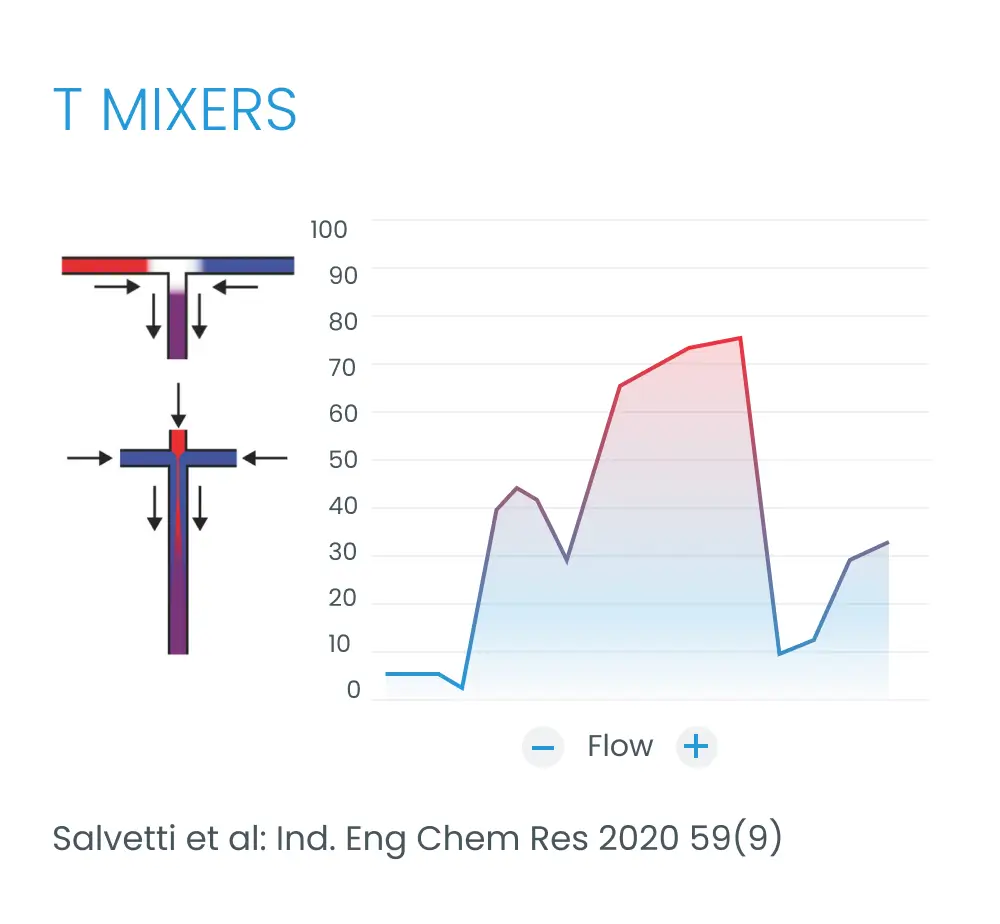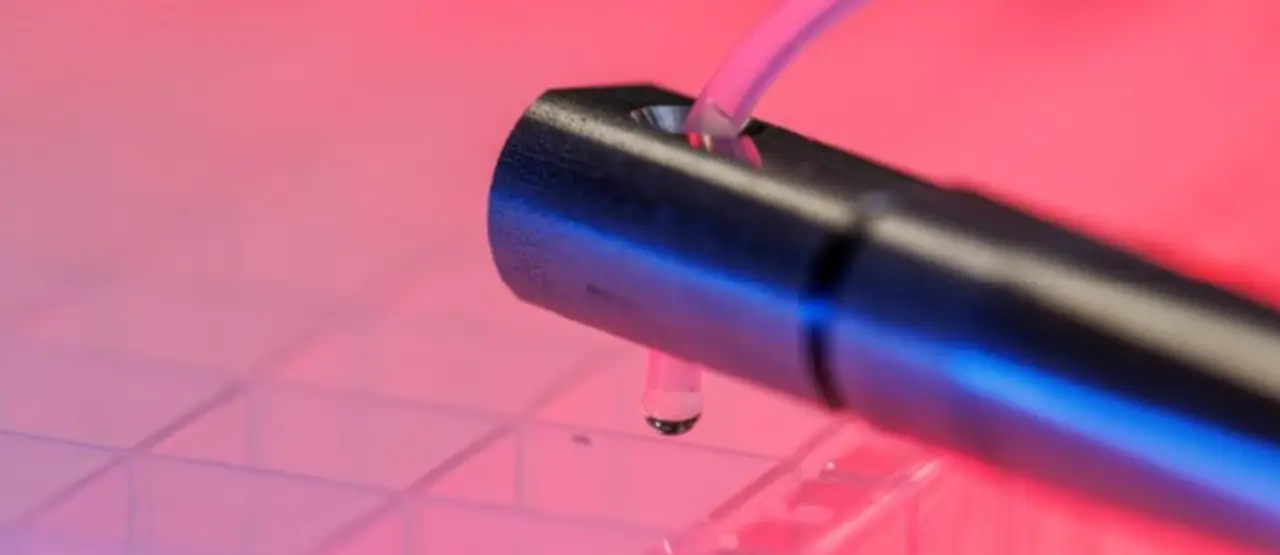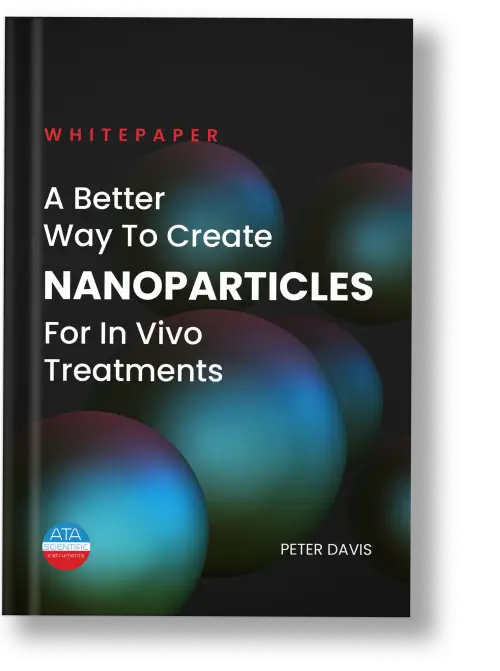Micropore Pathfinder
One mixer from lab to clinic to GMP manufacture

Nanoparticle engineering using a single, reusable device overcomes the limitations of existing methods of LNP manufacture and offers a sole approach to address all the stages in the process.
Book a free trial of the Micropore AXF Pathfinder, the innovative solution for overcoming challenges in LNP manufacturing. Our expert team will visit your premises to demonstrate how this compact device can deliver optimal, scaleable results.
Our Clients

Democratise Medicine- Micropore Pathfinder
Micropore advanced cross flow mixing technology enables a faster, cheaper and more efficient LNP manufacturing process. The mixing device is small enough to fit in the palm of your hand, can disassemble completely and is simple to clean.
It can be scaled up in volume from 0.2ml used during development stages to 20L/hr and beyond as required. It uses the same shear, same physics and same technology from lab bench to manufacturing scale to enable scale up with confidence.
FORMULATE
You may be experiencing a formulation challenge, require support, or would like a feasibility study. Let’s discuss your research requirements.
the journey

The product development journey all starts with mixing
Product develop is a journey and has distinct phases that can include discovery, pre-clinical, clinical and manufacturing. The formulation technology you start with affects the whole development journey.









manufacturing process
Current mixing technologies present challenges
When considering the manufacturing process of an LNP it is important to understand the speed of production, robustness of the technique, in process controls needed and the yield that can be achieved.
Impingement jet mixing (IJM) or T-mixers are the most widespread manufacturing method currently. It involves rapid high turbulent mixing and can support high yields through batch mode by placing units in parallel configuration with synchronised pumps. Although IJM is popular for many pharmaceutical manufacturers, concerns remain – high turbulent mixing combined with high pressure and shear stress effects can compromise LNP stability and affect overall performance of the product.

Microfluidics is another popular method that offers high reproducibility and can be used for formulation at the discovery stage but each microfluidic chip has a very limited throughput. You can use a number of microfluidic chips in parallel but unlike computer chips there are practical limits to fluid channel miniaturisation, and they require complex set ups.
So, it’s just not possible to scale up formulating using microfluidics and as your development journey continues you will always reach a no through road for microfluidic technology.
CREATE
Overcome roadblocks experienced by other methods. Discover Micropore advanced cross flow technology, how it works and benefits or capabilities it provides.

Advanced Cross flow (AXF)
Starting small: Pathfinder AXF family
Using a stainless-steel, 316L precision engineered membrane, Micropore advanced cross flow mixing technology enables a faster, cheaper and more efficient LNP manufacturing process. The mixing device is small enough to fit in the palm of your hand, can disassemble completely, is simple to clean and requires PTFE O-rings a simple, low cost consumable.
Advanced Cross flow (AXF) and microfluidic mixing both offer similar levels of experimental control and performance at the discovery stage where the formulation quantities can be as small as 1-2 mL. As development continues to the pre-clinical stage the output of an AXF mixing device with 100,000 pores can easily be increased to deliver from 1-2 mL up to 10-20 L/hr and beyond to 100s of mL as required.
Zetasizer size distribution report of LNPs created with the Micropore AXF mini
- Continuous, scalableNarrow particle size distribution
- Low maintenance, No cartridgesNo moving parts, that are easy to clean Small equipment footprint
- High Volume, GMP readyDiscovery through to clinical and manufacturing (0.06L/hr – 1500L/hr)
- Efficient Cross Flow MixingmRNA encapsulation efficiencies over 97% in LNP production



DELIVER
Chat to us about how throughput Micro and Nanoparticle engineering is achieved with a single Micropore platform using scalable membrane emulsification and encapsulation technology.
Ease of scalability
Producing COVID-19 vaccines for the entire world population rapidly demonstrated the microfluidic development scale up roadblock. Microfluidic developed discovery formulations had to be scaled up using alternative higher throughput formulating technology with different operating parameters.
With a growing demand for more mRNA-LNP based vaccines, proven to have high efficacy, there is currently a need to facilitate a faster and cheaper global deployment of a high-throughput manufacturing method. A GMP compliant approach is needed, from the earliest possible stage through to manufacturing, that is also tuneable in size to access various tissues or specific drug targets.
Micropore technologies allows for seamless scaleup with consistent physics, mechanisms conditions and geometry across its equipment range. Ultimately Micropores AXF technology can be scaled up to a device with over 10 million pores with the potential for a throughput of up to 20 Liters per minute all this from a device that would still fit inside a briefcase. Advanced cross flow mixing from Micropore Technologies allows controlled, low shear precision continuous flow mixing technology from nano to micro formulations for when you want to avoid roadblocks on your product development journey. It uses the same same shear, same physics and same technology from lab bench to manufacturing scale to enable scale up with confidence.

Micropore technologies

Continuous Formation & Stabilisation of LNPs Increases Scale, Reduces Hold Time & Minimises Risk of mRNA Degradation
Micropore technologies employs laminar flow mixing across a permanent stainless steel membrane to produce reproducible, scalable LNPs. The outer dispersed phase is continuously mixed with the aqueous inner compartment to form LNPs. Size controlled uniform particles are generated in a continuous flow capacity of up to 1500 L/hour making this by far the fastest production rate in the LNP industry. This would translate to roughly 58,000 doses of vaccine every minute, an important capability when faced with the demands of global disease emergencies.

Quality, Efficacy and Safety

GMP compliance with online and inline analytical tools
Key elements every regulator will consider when deciding whether to approve a LNP vaccine or therapeutic are Quality, Efficacy and Safety. Critical Quality Attributes (CQAs) when developing LNPs include: particle size, polydispersity, zeta potential, RNA loading.
ATA Scientific offers several technologies to characterise LNPs. These can be found in the table below.
ADVANCED PHYSICOCHEMICAL ANALYSIS SOLUTIONS

stability
Removing barriers for next generation LNP manufacturing




RESOURCES

A better way to create nanoparticles
The landscape of Nanoparticle generation is changing rapidly. Interestingly most commercial offerings are not particularly novel, some are blatant ‘me-too’s’ and frankly most struggle with scale. To understand the future a dive into history helps.
Let’s discuss several modalities of nanoparticle generation such as T-tube mixers, microfluidics, confined injection mixers, and advanced cross flow technologies to understand why they work or not.

Essential Guide to Nanoparticle Engineering for Drug Delivery – eBook
Unlock the full potential of your nanoparticle drug delivery systems with our comprehensive eBook. This essential guide delves into the intricacies of LNP manufacturing, offering expert tips on optimizing formulations, ensuring reproducibility, and overcoming common challenges.
Whether you are a researcher or a biopharma professional, you’ll gain valuable insights into the latest technologies and best practices to streamline your LNP production from research to commercial scale.
Learn about the strengths and weaknesses of popular nanoparticle production processes, and discover what an ideal platform for nanoparticle production looks like. With practical guidance from industry experts, this resource is designed to help you achieve high-quality, scalable results in your nanoparticle engineering endeavors.
GET IN TOUCH
Get in touch with ATA Scientific today to learn more about our systems and services and discuss how the Micropore Pathfinder can deliver nanoparticles at scale without extensive setup or cost. Trial options are available




 02 9541 3500
02 9541 3500




